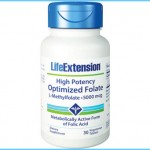This antioxidant belongs to the same family of carotenoid compounds that beta-carotene comes from. But compared to beta-carotene, lycopene is twice as potent an antioxidant. As such, lycopene is yet another dietary defense mechanism against free radical damage to the genetic material of cells.
A few studies have suggested that lycopene protects women from cervical dysplasia. One study from the University of Pennsylvania School of Medicine found that women with the highest intake of lycopene were one-third as likely to have dysplasia compared to those who consumed the least.5
Lycopene is found in red-colored fruits and vegetables. It’s the natural chemical that gives these foods their bright color. Tomatoes are the richest source of lycopene, but you’ll also find some in pink grapefruit, watermelon, guava and apricots.
While more work needs to be done to unravel the precise role lycopene plays in cervical health, there’s no reason why you shouldn’t be getting a good supply in your daily diet. Based on the research that has been conducted in the area of heart disease, it appears that an intake of 5 to 7 milligrams offers protection. And that’s easy to get if you eat heat-processed tomato products.
Lycopene for Cervical Dysplasia Photo Gallery
Lycopene in Foods
FOOD LYCOPENE (MILLIGRAMS)
Tomato, raw, 1 small 0.8-3.8 mg
Tomatoes, cooked, 1 cup (250 ml) 9.25 mg
Tomato sauce, 1/2 cup (125 ml) 3.1 mg
Tomato paste, 2 tbsp (30 ml) 8.0 mg
Tomato juice, 1 cup (250 ml) 23.0 mg
Ketchup, 2 tbsp (30 ml) 3.1-4.2 mg
Apricots, dried, 10 halves 0.3 mg
Grapefruit, pink, 1/2 4.2 mg
Papaya, 1 whole 6.2-16.5 mg
Watermelon, 1 slice (25 cm X 2 cm) 8.5-26.4 mg
Heat-processed tomato products provide a source of lycopene that is much more available to the body. Even though one fresh tomato packs 4 milligrams of lycopene, your body doesn’t absorb all of it. And here’s another tip to increase the amount of lycopene you absorb—add a little olive oil to your pasta sauce. Lycopene is a fat-soluble compound and is better absorbed in the presence of a little fat.
If you’re looking for a boost of lycopene, all you really have to do is add a glass of low-sodium tomato juice to your lunch. However, lycopene supplements are available in health food and drug stores. If you opt for supplements, I recommend that you choose a brand that’s made with the Lyc-O-Mato™ or LycoRed™ extract. This source of lycopene comes from Israel and is derived from whole tomatoes. It is also the extract that has been used in clinical studies. Most supplements offer 5 milligrams of lycopene per tablet, so one a day is all you need.












